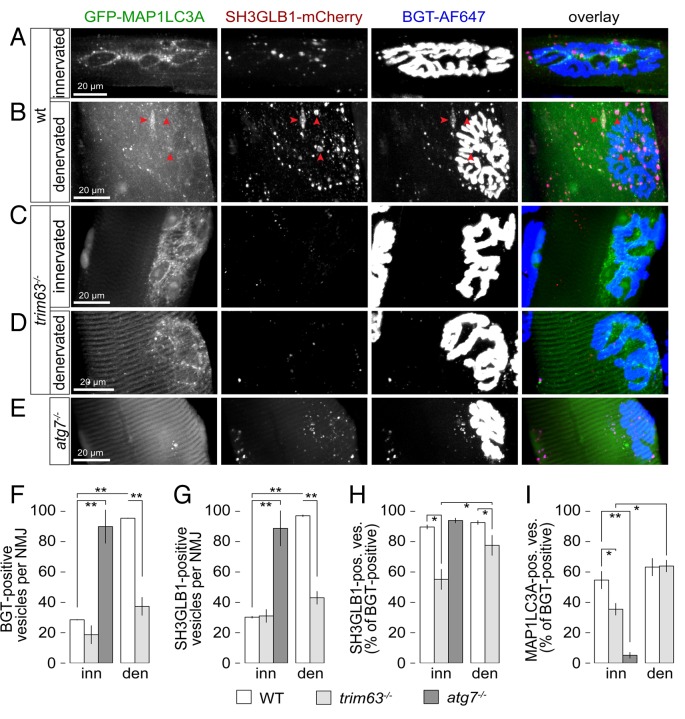Figure 7. Endocytic CHRN carriers proliferate upon denervation in a TRIM63-dependent manner. Mouse tibialis anterior muscles of WT, trim63−/−, or atg7−/− mice were cotransfected with SH3GLB1-mCherry and GFP-MAP1LC3A. Five days before imaging, WT and trim63−/− muscles were unilaterally denervated. Twenty-four hours before in vivo confocal microscopy imaging CHRNs were stained with BGT-AF647. (A–E) Maximum z-projections of individual SH3GLB1 and MAP1LC3A double-positive fibers at the level of their NMJs from innervated (A, C, and E) or denervated muscles (B and D) of either WT (A and B), trim63−/− (C and D), or atg7−/− mice. Red arrowheads in (B) depict sac-like triple-positive structures, which resemble multivesicular bodies or amphisomes. (F–I) Quantitative analyses as indicated. All graphs depict mean ± SEM (WT and trim63−/−: n = 3 muscles, between 616 and 1415 structures were analyzed per condition. atg7−/−: n = 4 muscles, 2800 structures were analyzed). *P < 0.05; **P < 0.01 according to the Welch test.

An official website of the United States government
Here's how you know
Official websites use .gov
A
.gov website belongs to an official
government organization in the United States.
Secure .gov websites use HTTPS
A lock (
) or https:// means you've safely
connected to the .gov website. Share sensitive
information only on official, secure websites.
